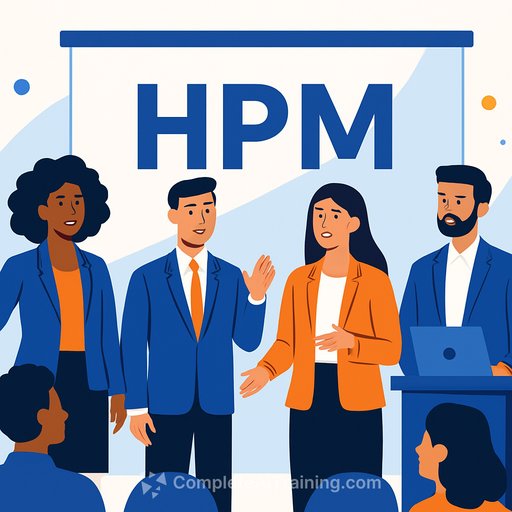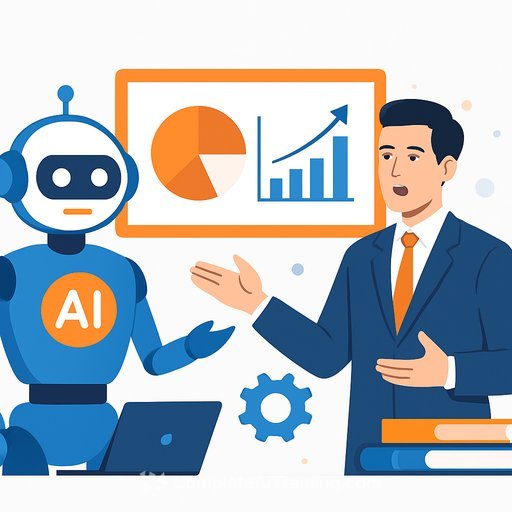CHRO + CTO: Merge the Mandates
It sounds heretical to HR purists, but look around. As agentic AI shows up in workflows, reasons through decisions, and acts without hand-holding, the talent strategy and the technology strategy are the same strategy. India Inc should treat them as one and the same - and consider merging the CHRO mandate into the CTO's remit.
Once your workforce blends humans and intelligent agents, the org chart that splits "people" from "platforms" stops making sense. The leader who owns data, architecture, and the stack is already shaping hiring, performance, and productivity - for both humans and AI agents.
Why this is happening
Agentic AI is not a humdrum chatbot. It operates in systems, collaborates with humans and other agents, and triggers outcomes. IT now looks a lot like HR for digital workers: recruiting agents, onboarding them to data and permissions, training them on tasks, monitoring performance, and off-boarding when models drift or risk rises.
CTOs are evolving into orchestrators of hybrid workforces - humans, bots, agents, and platforms. CHROs, meanwhile, are being asked to "agent-ify" roles: break jobs into tasks, decisions, and judgments, then assign them to humans, AI, or both. If tech is already steering this shift, full accountability should sit with the stack owner.
Five reasons the CTO should own the hybrid workforce
- Unified strategy: As agents run onboarding, payroll tickets, mobility, and learning paths, "talent ops" and "tech ops" merge. The CTO already holds data, infra, and platforms - consolidate and move.
- Talent isn't just people: AI agents need lifecycle management like employees. Provisioning, permissions, monitoring, and retirement are CTO territory.
- Speed over sentiment: HR needs real-time analytics, predictive churn, internal marketplaces, and skills graphs. These sit on data pipelines and architectures the CTO runs.
- Shared performance system: If you're calibrating agent KPIs (throughput, deflection, time-to-resolve) alongside human metrics, you need a leader fluent in both talent and tech.
- Resisting redundancy: If HR cannot own the agentic roadmap, the function will be swallowed by tech. "We oversee hiring" won't cut it by 2026.
But what about culture, empathy, and change?
They're essential - and they don't go away. This isn't a hostile takeover; it's a smart merge. Keep a senior human-centric lead to own culture, ethics, and workforce trust, but place the function under a leader who understands human-machine symbiosis.
The questions shift. Not "How's morale?" alone, but also "Are our bots collaborating well with humans?" "Where do we draw the line on autonomy?" "What guardrails protect dignity, privacy, and fairness?" The right answer blends empathy with system design.
What the future looks like
Expect a title move: "Chief Workforce & AI Officer" or HR rolling into the CTO's office with a strong culture/ethics lead. Expect agent succession planning. Expect the HR playbook to include model updates, bias checks, fine-tune cycles, prompt standards, and agent uptime.
Also expect sharper metrics: mixed-team productivity, skills shift rates, agent deflection and accuracy, compliance posture, and measurable experience gains for employees and customers.
Six-step playbook for India Inc
- Start with a joint charter: Create a single roadmap for technology and talent tied to business value. Make the CTO and CHRO co-sponsors for "Humans + Agents."
- Re-map roles into tasks, decisions, and judgments: For each, decide human, agent, or hybrid ownership. Build clear escalation paths and human-in-the-loop points.
- Merge leadership: Stand up a "Chief Workforce & AI Officer" or embed HR under the CTO. Keep a named leader for culture, ethics, and change.
- Build the stack for hybrid workforces: Data lakehouse, agent registry, permissions and identity, evaluation pipelines, and human-agent performance dashboards. HR owns skills and career pathways; the CTO owns the stack.
- Embed culture, limits, and ethics on day one: Define where agents must defer to humans. Bake in bias checks, privacy rules, audit trails, and red-teaming. Socialize the boundaries with managers.
- Reset metrics and incentives: Track agent uptime, mixed-team output, cycle time, rework rates, internal mobility between human tasks and agent tasks, and skills velocity. Reward managers who deliver value with fewer handoffs and better experience.
Practical starting points for HR leaders
- Run a 60-day job deconstruction sprint across 3 critical functions. Tag each unit of work as human, agent, or hybrid. Pilot two agent use cases with clear success metrics.
- Set up an agent lifecycle council with HR, IT, Legal, and Risk. Approve templates for onboarding, monitoring, and off-boarding agents.
- Publish a "human-first guardrail" one-pager: what agents can't do, consent rules, escalation, and transparency standards for employees.
- Upskill HRBPs on data literacy, prompts, and agent evaluation. Pair every HRBP with an engineering counterpart.
A note on org design
This merge works when responsibilities are explicit. The CTO owns data, platforms, security, automation, and agent reliability. HR leadership owns experience, culture, skills, change, and ethics. Both co-own workforce outcomes and business value.
Get that clarity, and the hybrid workforce stops being a slide and starts being a system.
Skill up your HR team
If your HR team needs a fast path into AI, consider practical programs focused on workflows, prompts, and measurement. Start here:
- AI courses by job - pick paths that map to HR, TA, L&D, or ops.
- AI automation certification - build skills for agent design and evaluation.
Bottom line
The CHRO-CTO merger isn't a coup. It's an update to how work gets done. Your workforce is humans plus agents. Put one accountable leader over both - and keep culture and ethics built into the stack from day one.
The question for HR isn't "if." It's "how soon can we measure better outcomes from mixed human-agent teams?"
Your membership also unlocks:






